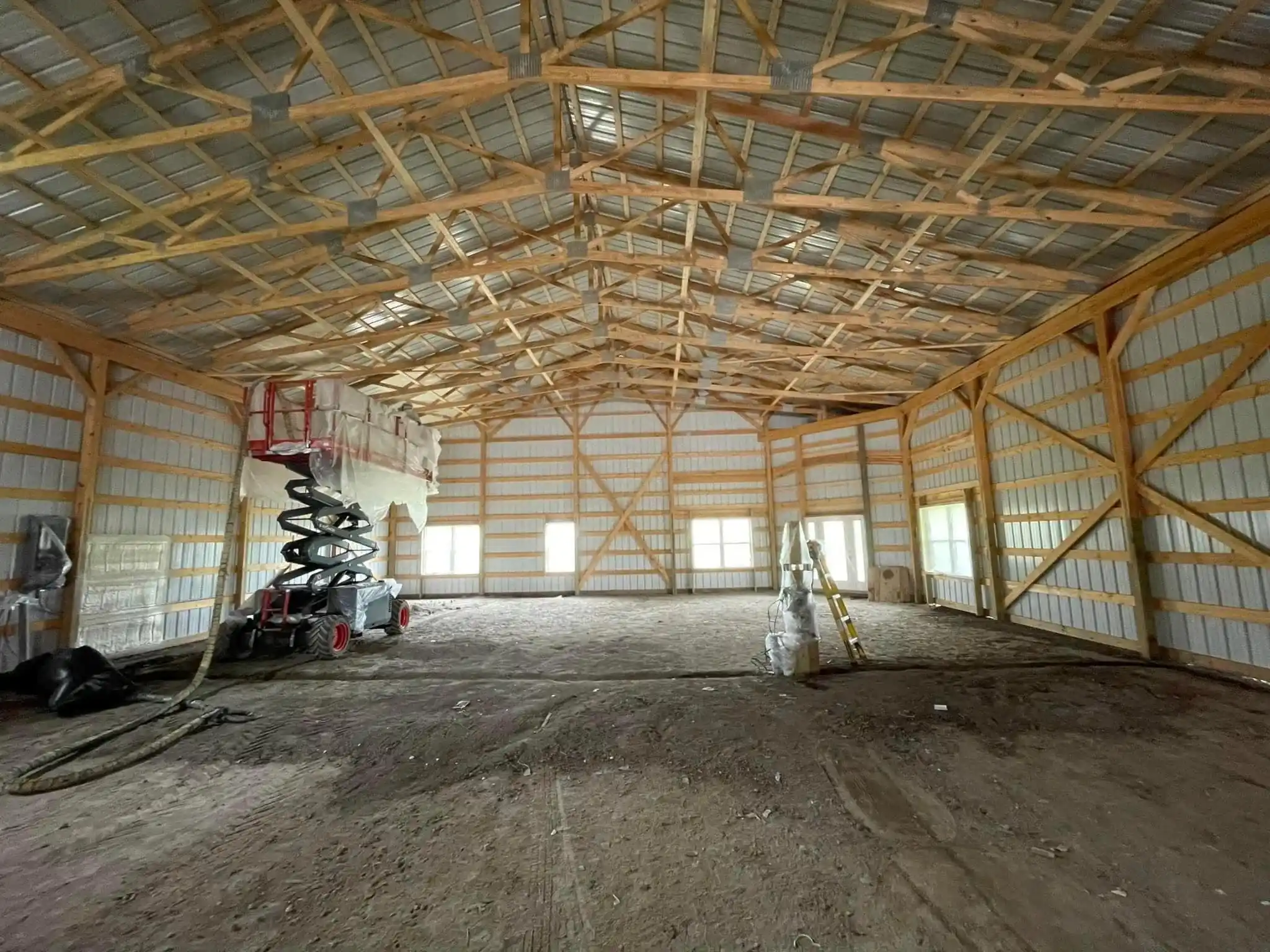
Spray foam insulation plays a direct role in preventing moisture intrusion and mold formation in agricultural buildings. By creating an air-tight and moisture-resistant barrier, it blocks humid outdoor air from entering temperature-sensitive spaces like livestock shelters, storage facilities, and processing barns. The material adheres to irregular surfaces, leaving no gaps for condensation to settle stopping mold before it starts.
Closed cell spray foam is especially effective due to its high density and low permeability. It resists water vapor and prevents moisture from seeping into framing cavities. Farms in humid zones or those using water-intensive processes benefit from this resistance. Unlike fibrous insulation types that trap moisture, spray foam repels it.
Ozark Eco Foam has installed spray foam across a range of Kansas farms, from poultry barns to equipment sheds. Field data consistently show that closed cell spray foam reduces indoor humidity fluctuations and eliminates microbial growth on interior wall surfaces.
Moisture enters farm structures through leaks, condensation, and air gaps. Spray foam forms a continuous seal that minimizes:
Without this protection, organic materials like wood, straw, and feed become breeding grounds for mold.
| Insulation Type | Air Seal Quality | Vapor Barrier | Mold Resistance | Typical Lifespan | Suitable for Farms |
|---|---|---|---|---|---|
| Closed Cell Spray Foam | Excellent | Yes | High | 30+ years | Yes |
| Open Cell Spray Foam | Moderate | Partial | Moderate | 20+ years | Yes (interior only) |
| Fiberglass | Poor | No | Low | 10-15 years | No |
| Cellulose | Poor | No | Very Low | 10-15 years | No |
Bonus Tip: In livestock structures, always use closed cell spray foam to resist ammonia and animal-related vapors that degrade traditional insulation.
Mold thrives in organic-rich, humid environments. On farms, hay storage areas, feed rooms, and animal housing units are vulnerable due to:
According to the USDA Agricultural Research Service, mold contamination in farm buildings can reduce livestock productivity by up to 12% (Source: USDA ARS, 2024). Spray foam blocks external moisture and limits internal vapor drive, removing the conditions mold needs to grow.
| Property | Closed Cell Foam | Open Cell Foam |
|---|---|---|
| Vapor Permeability (perm rating) | < 1.0 | ~10.0 |
| Water Absorption (by volume) | < 2% | ~25% |
| R-Value per inch | ~6.5 | ~3.8 |
| Compressive Strength | >25 psi | ~5 psi |
Bonus Tip: In regions with freezing winters like Southeast Kansas, closed cell foam helps prevent frost-related cracking by sealing out moisture that can freeze inside cavities.

Southeast Kansas farms face high humidity from May to September and frequent freeze-thaw cycles from November to March. These conditions encourage moisture penetration and structural swelling. Spray foam applied to:
Yes, once cured. Use closed cell in animal shelters to reduce vapor and odor absorption.
No, closed cell acts as a vapor barrier; it prevents outside moisture from entering and reduces internal condensation.
One to three days depending on building size and prep requirements.
Yes. It adheres well to metal and prevents condensation under roof decks.
Yes, by limiting moisture intrusion and sealing air gaps, it lowers overall indoor humidity.
For long-term moisture control and mold prevention in Kansas farm structures, contact Ozark Eco Foam. Reliable insights come from hands-on experience with agricultural environments.
Ozark Eco Foam Phone: (620) 383-9092 Email: ozarkecofoam@gmail.com
Minimal. Inspect visually every few years for surface cracks or mechanical damage.
Yes, but with specialized equipment and surface prep. Cold-weather formulations improve adhesion.
It doesn’t attract rodents, but they can tunnel through if other materials nearby support nesting. Use barrier panels in exposed areas.
Closed cell foam typically pays off in 5-8 years through reduced mold damage, better temperature control, and longer insulation lifespan.
Only if mechanically damaged or improperly applied. Otherwise, it lasts decades with stable performance.